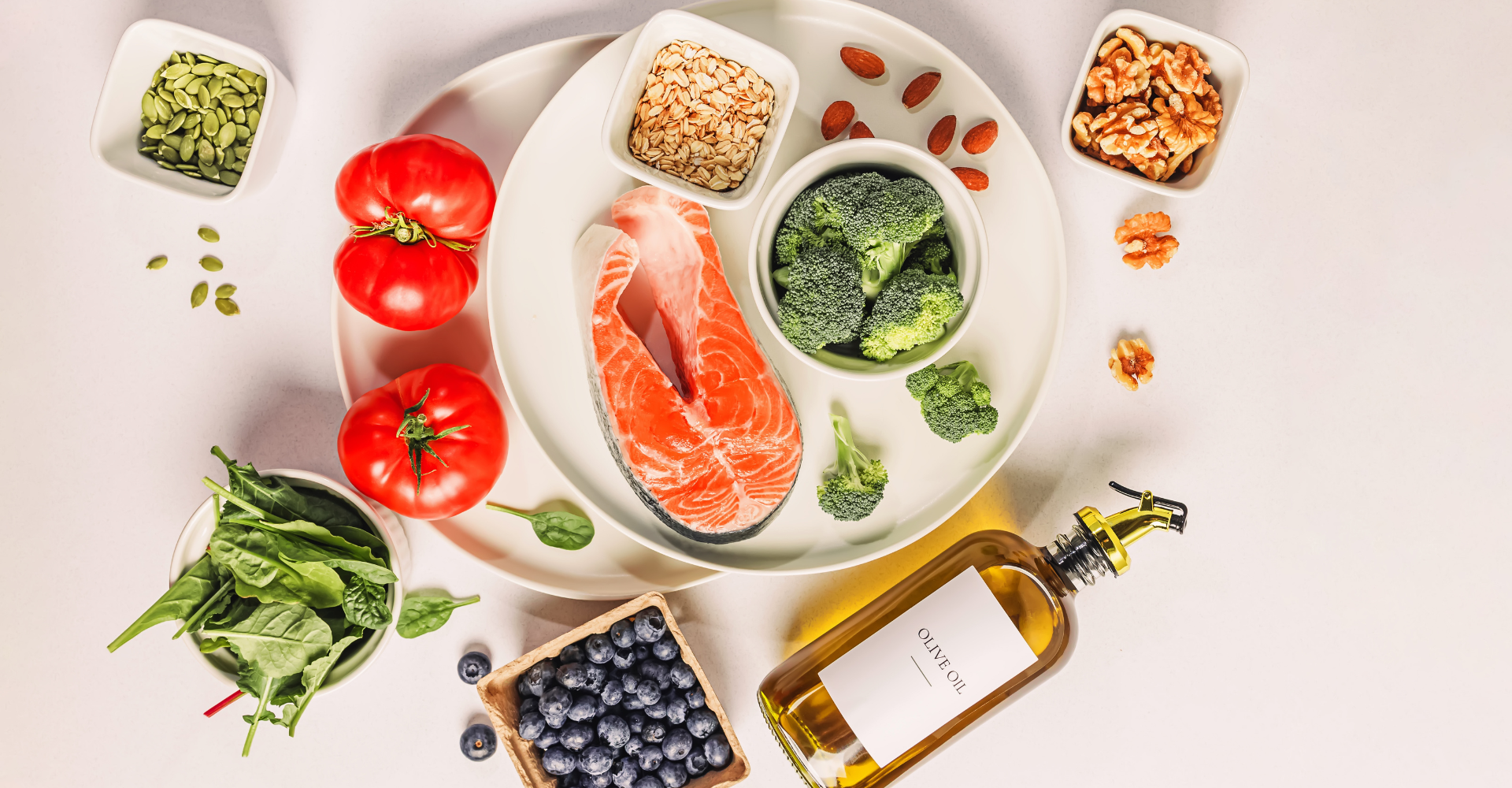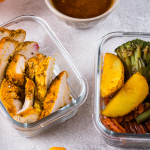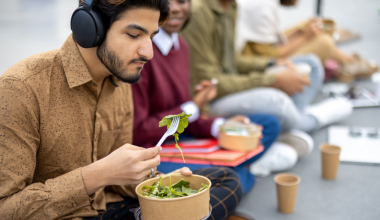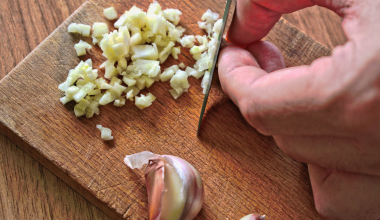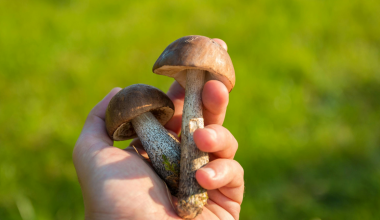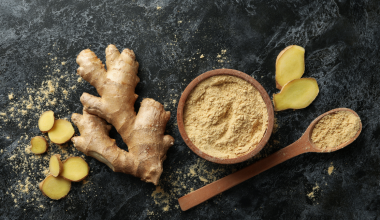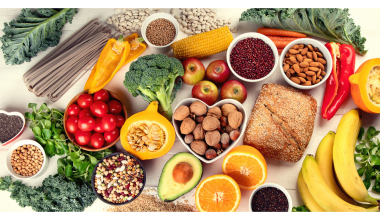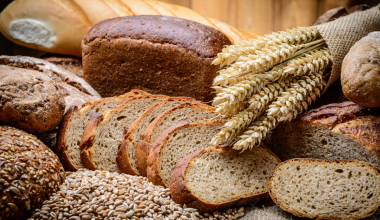When you buy through our links, we may earn a commission. Learn More.
It’s hard to miss the recent headlines about the damage low-grade, chronic inflammation can do to our bodies. Unlike the short-term kind that kicks in to help us heal from injury or infection, chronic inflammation sticks around—and over time, it can quietly wear down healthy cells and tissues. It’s been linked to everything from joint pain and skin conditions to serious diseases like heart disease and diabetes.
Low-grade inflammation can be caused by a variety of factors, including pollution and environmental toxins, poor lifestyle choices, and an unhealthy diet. While reducing air pollution may be out of your control, most of the lifestyle choices are within your control, with research now showing us that what you eat plays a major role in the prevention of inflammation.
A healthy, whole-food diet gives our bodies the nutrients they need to function well, fight disease, and thrive. On the flip side, research clearly shows that eating too many ultra-processed foods, refined carbs, and added sugars can keep inflammation simmering below the surface.
The great news? You don’t need a medical degree or a pantry full of supplements to take control. What’s in your shopping basket, in your cupboard and on your plate can make a real difference.
But first, how do you know if you have chronic inflammation?
You may notice vague symptoms such as fatigue, body pain, mood changes, gastrointestinal issues, and persistent infections. However, the only way to truly know if you have chronic inflammation is to get checked by your doctor. They will review your symptoms, perform a physical exam, and perhaps check your blood with a C-reactive protein (CRP) or hs-CRP test.
C-reactive protein (CRP) levels indicate the presence and extent of inflammation in the body. CRP is a protein produced by the liver in response to inflammation; most healthy adults have CRP levels below 0.3 mg/dL.
The erythrocyte sedimentation rate (ESR) is another blood test for inflammation used for people with inflammatory conditions, such as rheumatoid arthritis.
If your tests indicate you have chronic inflammation, one of your first ports of call is to reduce your CRP levels through changes in diet.

The Danger of Untreated Inflammation
Learn more about chronic inflammation, how you can test for it and lifestyle changes to counter it. Read Now.
Why food matters
Every time you take a bite or a drink, you are making an important choice to either advocate for your health – or not. Fresh, whole foods and beverages packed with antioxidants and healthy omega-3 fatty acids help cool inflammation, while foods such as ultra-processed eats and sugar-loaded treats and drinks can spark flare-ups.
To make healthy eating less of a chore, start by thinking about choosing and preparing food as a moment of Zen in your life. This will help you practice mindful and intuitive eating – think about what you are eating and the types of food and drinks that make you feel energized and feed all your senses.
This can include beautiful berries and bright fruits, fresh leafy greens and vegetables, whole grains, fatty fish, nuts, seeds and healthy oils. Combine that with legumes and fresh herbs and spices and a whole world of fun and delicious recipes are at your fingertips.
Not to mention ‘tis the season to shop at your local farmers market to source the best primary ingredients possible, and to feel more connected to your food and the people who produce it.
Making healthy eating a reality
As many Health Insiders have told us, the key to making your anti-inflammatory diet a lasting part of a healthy lifestyle is to keep it real, doable, and flexible. Here are some practical, evidence-backed steps that go beyond generic advice that have helped our community embrace and stick with their anti-inflammatory diet.
🥗 1. Start with Small, Sustainable Changes
Instead of overhauling your entire diet overnight, begin with one or two swaps. Add a handful of greens to your sandwich. Replace soda with sparkling water. Cook one extra homemade meal a week. Small steps lead to big results over time—and you’re way more likely to stick with them.
🛒 2. Build a “Go-To” Grocery List
Keep your kitchen stocked with anti-inflammatory staples like frozen berries, canned chickpeas, whole grains, olive oil, and herbs like thyme and rosemary and spices such as turmeric and ginger. When the good stuff is easy to grab, you’ll use it more.
🍲 3. Cook in Batches (and Freeze!)
Make life easier by prepping large portions of anti-inflammatory meals like soups, grain bowls, or roasted veggies. Freeze the extras for nights when cooking feels impossible.
📱 4. Unfollow Perfection
Healthy eating isn’t about eating perfectly—it’s about making better choices most of the time. If you eat a burger and fries today, that doesn’t mean you’ve “failed.” Just get back to your basics tomorrow. This mindset shift is what makes healthy eating sustainable.
🥣 5. Add Before You Subtract
Rather than focusing on restriction, focus on adding the good stuff: more plants, more colour, more fibre. Over time, these delicious and nourishing foods naturally crowd out the more inflammatory ones.
👯 6. Get Social About It
Share meals with friends. Trade recipes. Join a cooking class or an online challenge. When healthy eating is connected to real-life relationships and community, it’s more meaningful—and more fun.
📓 7. Track What Makes You Feel Good
Keep a simple food and mood journal for a few weeks. Noticing which meals leave you energized vs. sluggish can help you understand your body’s unique responses and keep you motivated.
Weekly Anti-Inflammatory Diet Meal Planner
Here’s a simple, grab-and-go weekly meal planner packed with anti-inflammatory foods. Feel free to swap meals between days or adjust portion sizes to suit your taste and schedule.
| Day | Breakfast | Lunch | Snack | Dinner |
| Monday | Overnight oats with blueberries & flaxseeds | Quinoa & chickpea salad with cucumber, tomato & olive oil | Apple slices + almond butter | Baked salmon with garlic-roasted broccoli |
| Tuesday | Green smoothie (spinach, banana, ginger) | Lentil & sweet potato stew | Handful of walnuts | Turkey & veggie stir-fry over brown rice |
| Wednesday | Greek yogurt with strawberries & chia | Kale-apple slaw with grilled chicken | Carrot sticks + hummus | Mackerel fillet with quinoa & sautéed spinach |
| Thursday | Steel-cut oats with cinnamon & pecans | Brown rice bowl with black beans, avocado & salsa | Blueberries | Turmeric-ginger lentil soup + side salad |
| Friday | Smoothie bowl (mixed berries, spinach) | Roasted vegetable wrap with hummus | Pear + a small handful of almonds | Grilled shrimp with zucchini noodles & pesto |
| Saturday | Avocado toast on whole-grain bread + tomato | Chickpea & roasted veggie Buddha bowl | Celery sticks + nut butter | Baked cod with turmeric cauliflower “rice” |
| Sunday | Poached eggs over sautéed kale & mushrooms | Turkey-sweet potato chili | Sliced bell peppers + tzatziki | Stuffed bell peppers with quinoa, black beans & spinach |
Tips for making it stick:
- Prep in advance: Roast a big tray of veggies or cook grains on Sunday to mix and match during the week.
- Batch-cook proteins: Grill extra chicken or fish for an protein option for a chef’s salad at lunch.
- Frozen fruits & veggies are your friend: They’re just as nutritious and cut prep time.
- Stay flexible: If you’re tired of one dish, swap it out—keeping the core anti-inflammatory ingredients is what matters most.
Print this planner, stick it on your fridge, or snap a pic—whatever helps you keep anti-inflammatory eating top of mind all week!
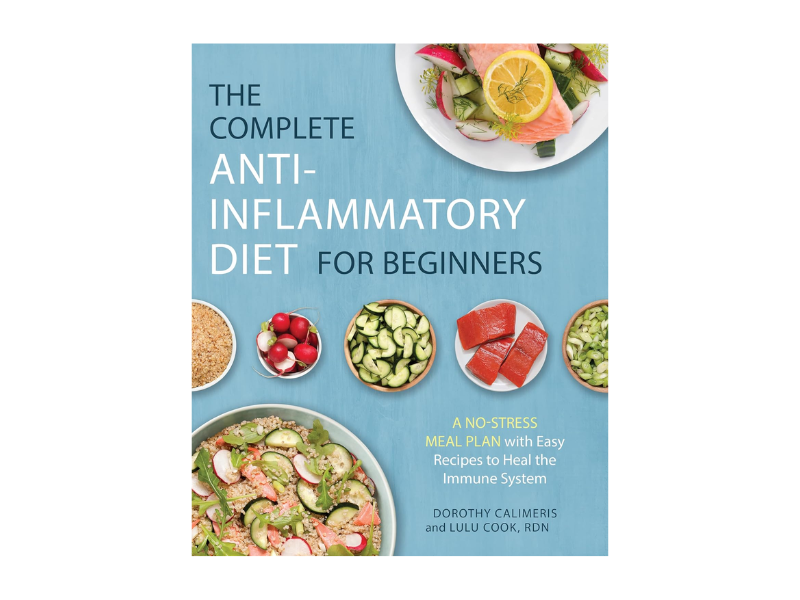
The Complete Anti-Inflammatory Diet for Beginners makes it easy to reduce chronic inflammation with simple recipes, weekly shopping lists, and expert tips. Learn which foods to eat (and avoid) to relieve pain, boost energy, and support healing.
Bringing It All Together
Switching to an anti-inflammatory diet doesn’t have to feel like punishment—it’s about adding vibrant, life-affirming foods that make you feel good from the inside out, mentally and physically. Start small: swap white toast for oatmeal with berries, grill salmon instead of grabbing a burger, and sprinkle turmeric into your scrambled eggs.
Over time, you’ll likely notice less joint stiffness, more energy, and even a lift in mood. And that’s worth celebrating—because feeling your best isn’t just about looking good; it’s about living well.
~ Read more from The Health Insider ~
- The Science of Sweat: How Saunas Boost Heart & Brain HealthExplore the life-extending benefits of sauna use. Compare traditional and infrared costs, health benefits and safety in our expert guide.
- There’s a Reason Your Voice May Not Be As Clear as it Can BeFrom dry winters to loud parties, your voice takes a beating. Learn how to protect your “vocal instrument” with these expert tips and SAC guidelines.
- Leftovers Safety: Store & Reheat Like a ProLearn how to store and reheat holiday leftovers safely. From the “Two-Hour Rule” to freezing tips, keep your Canadian kitchen healthy this season.
- Guilt-Free Indulgence for the Holidays. This is How it’s Done.Enjoy every plate this season! Prep your gut with our low-effort tips: boost hydration, sip digestive tea, and avoid the post-feast crash.
- Health Canada Authorizes TNKase for Treatment of Adult StrokeHealth Canada officially authorizes TNKase for treating acute ischemic stroke in adults. This pivotal approval introduces a faster, 5-second injection to emergency rooms nationwide.
- Generic Ozempic: Canada to See Significant Price DropsStruggling with high medication costs? Generic Ozempic is coming to Canada in 2026. Learn how prices could drop from $400 to around $100.
The information provided on TheHealthInsider.ca is for educational purposes only and does not substitute for professional medical advice. TheHealthInsider.ca advises consulting a medical professional or healthcare provider when seeking medical advice, diagnoses, or treatment. To read about our editorial review process click here.

